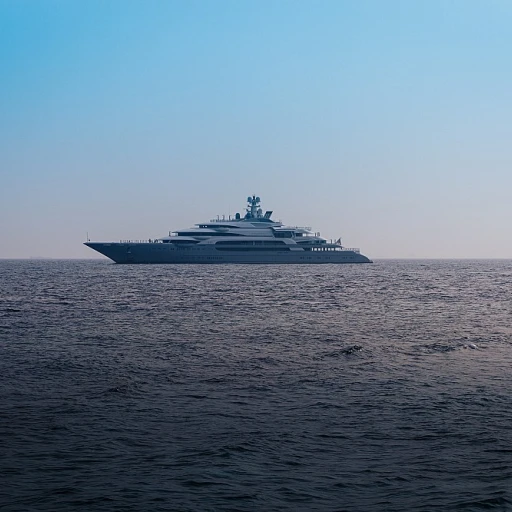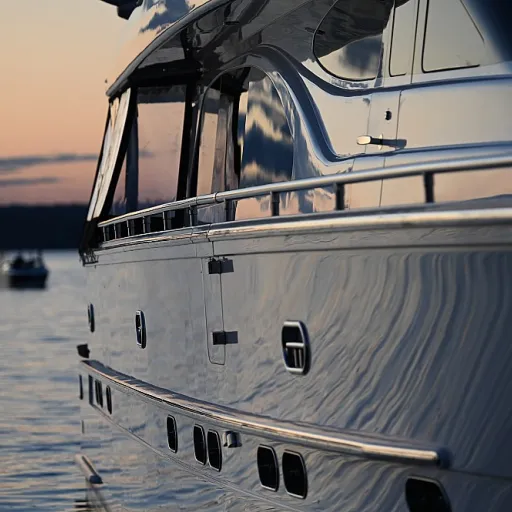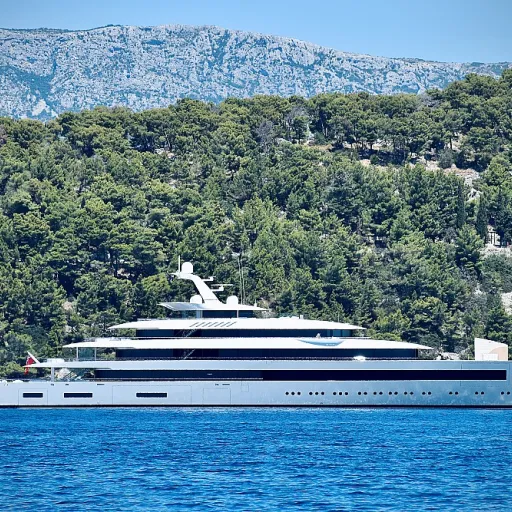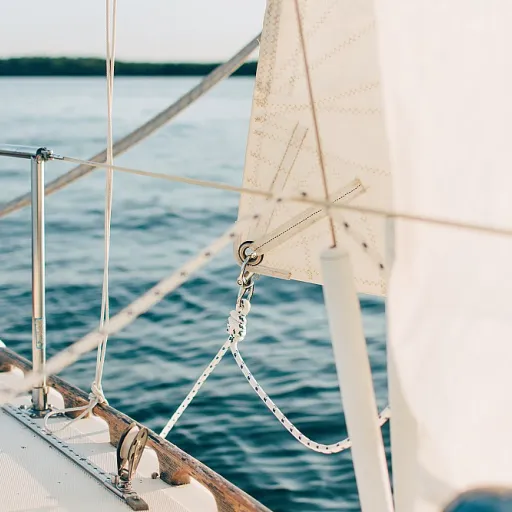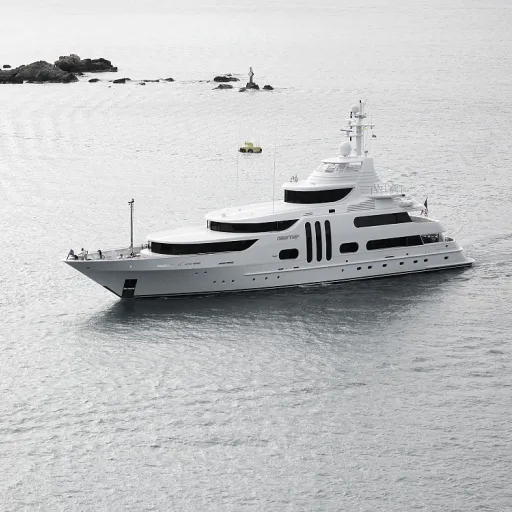-large-teaser.webp)
Understanding the basics of kitesurfing and windsurfing
What Sets Kitesurfing and Windsurfing Apart?
For yacht enthusiasts, both kitesurfing and windsurfing offer a unique way to experience the water, wind, and thrill of extreme sports. While both sports harness wind power to glide across flat water, their approaches and sensations are quite distinct. Understanding these differences is key before deciding which sport to bring aboard your next yacht adventure.
The Essence of Each Sport
Kitesurfing—sometimes called kiteboarding—relies on a large power kite that you control with a bar and lines. The kite pulls you across the water on a small board, and you steer by shifting the kite’s position in the wind. The sensation is dynamic, with the ability to launch, land, and even catch air for jumps. Kitesurfing gear is relatively compact, making it easier to store on a yacht, but handling the kite requires attention, especially in the early stages of learning.
Windsurfing uses a board with a sail attached to a mast. You hold onto the boom and use your body to control the sail’s angle, catching the wind to propel yourself forward. Windsurfing gear includes a big board and a board sail, and the sport is often seen as a classic water sport for those who love the feeling of gliding over the water. Windsurfers appreciate the direct connection to the wind and water, with foot straps providing stability and control.
Why Yacht Enthusiasts Love These Sports
- Both kitesurfing and windsurfing offer a direct connection to nature, using only wind power and skill.
- They provide a sense of freedom and adventure that complements the yacht lifestyle.
- Each sport brings its own learning curve, with kitesurfing often considered more challenging in the early stages, while windsurfing can be easier to learn for some, especially on flat water.
If you’re considering which water sport to try on your next yacht trip, it’s worth exploring how each fits into your onboard experience, from equipment needs to the thrill factor. For a deeper dive into how these sports can elevate your yachting journey, check out this guide to embarking on a luxurious yacht adventure.
Equipment requirements and storage challenges on yachts
Space and Storage: The Realities Onboard
For yacht owners and guests, the excitement of kitesurfing and windsurfing often starts with the practical question: where do you store all that gear? Both sports require dedicated equipment, but the demands on space and organization are quite different.
- Kitesurfing gear is generally more compact. The kite, lines, harness, and board can be packed into a couple of bags, making it easier to stow in yacht lockers or under seating. However, kites require careful drying and folding, especially after sessions in salt water.
- Windsurfing gear tends to be bulkier. Boards are larger and less flexible, and the mast, boom, and sail take up significant space. Some yachts with dedicated water sport garages can accommodate windsurfing gear, but it’s a tight fit on smaller vessels.
Both sports need secure, dry storage to prevent damage and ensure longevity. Salt water exposure can be tough on both kitesurfing and windsurfing equipment, so rinsing and drying after each use is essential. In the early stages of learning, guests may find it easier to handle kitesurfing gear due to its lighter weight, but windsurfing boards are often more forgiving for beginners to balance on.
Handling and Launching: What to Expect
Launching and landing are critical moments for both sports, especially from a yacht. Kitesurfers need ample deck space to set up lines and inflate the kite, and the process can be challenging in windy conditions. Windsurfers, on the other hand, need enough room to assemble the mast and sail, and the board must be lowered gently into the water to avoid damage.
Flat water is ideal for both sports, but wind direction and yacht positioning matter. Some yachts are equipped with swim platforms or tender garages, making it easier to launch and retrieve boards and sails. For those considering extreme sports in colder climates, exploring the world of extreme cold weather yachting offers insights into additional gear considerations and storage adaptations.
Maintenance and Longevity
Regular maintenance is key. Kites, sails, and boards all need to be checked for wear, especially after exposure to strong wind and salt water. Foot straps, harnesses, and lines should be inspected before each session. Proper care ensures your investment in water sports gear lasts for years, letting you focus on the thrill of the ride rather than equipment issues.
Safety considerations for yacht-based kitesurfing and windsurfing
Managing Risks on the Water
When it comes to kitesurfing and windsurfing from a yacht, safety is always at the forefront. Both sports rely on wind power and require careful planning, especially when launching or landing from a moving platform like a yacht. The water environment adds complexity, and the right approach can make all the difference.- Kitesurfing: Handling a power kite on deck or in the water demands skill. The early stages of learning kitesurf can be risky if wind conditions shift suddenly. It's essential to have enough space for launch and land, and to keep clear of the yacht's rigging and other guests. Flat water is ideal, but not always available at anchor.
- Windsurfing: While windsurfing gear is generally more compact, the board and sail still require space and coordination. Foot straps and the board sail setup can be tricky in choppy conditions. Windsurfers must be aware of currents and the yacht's movement, especially when returning to the vessel.
Essential Gear and Precautions
The right equipment is crucial for both sports. Wearing a life jacket, using a helmet, and having a buddy system in place are non-negotiable. Kitesurfing gear and windsurfing gear should be checked regularly for wear and tear, especially after exposure to saltwater. For those new to these water sports, the learning curve can be steep, so professional instruction is highly recommended.- Always assess wind and water conditions before heading out.
- Keep communication devices handy in case of emergency.
- Ensure all guests are briefed on safety protocols, whether they are learning or just observing.
Yacht-Specific Safety Tips
Launching from a yacht is different from a beach or lake. The yacht's position, the presence of other watercraft, and the available deck space all influence safety. It's wise to designate a crew member to assist with launch and recovery, and to keep the area clear of unnecessary gear. For more insights on how technology and digital tools can support safe yacht-based extreme sports, you can read about the CRN yacht online experience. Whether you are an experienced windsurfer or just starting to learn kitesurf, prioritizing safety ensures that your time on the water remains enjoyable and incident-free. The right preparation and respect for the elements are what set apart the best yacht adventures from the rest.Accessibility and learning curve for yacht guests
How Quickly Can Yacht Guests Get on the Water?
For yacht enthusiasts, the learning curve is a key factor when choosing between kitesurfing and windsurfing. Both sports offer a unique connection to wind and water, but the path to mastering each is quite different. Windsurfing is often considered more accessible for beginners, especially those eager to get on a board and sail with minimal fuss. The big board and stable rig make it relatively easy to learn the basics, particularly in flat water conditions. Many yacht guests can stand up and start moving with the wind after just a short introduction. Early stages focus on balance and handling the sail, and the progression is steady for most. Kitesurfing, on the other hand, presents a steeper learning curve. Handling a power kite requires coordination and understanding of wind power before even stepping onto the board. The initial lessons often take place on land or in shallow water, focusing on kite control and safety. It can take several sessions before a guest will feel confident enough to launch, land, and ride. The thrill is undeniable, but patience is essential in the early stages.- Windsurfing: Easier to learn for most, especially with the right windsurfing gear and flat water. Guests can often windsurf within hours.
- Kitesurfing: Requires more time to learn kite handling and safety. Expect a few days before guests can kitesurf independently.
What About Age and Fitness?
Both water sports are accessible to a wide range of ages and fitness levels, but there are differences. Windsurfing is generally less physically demanding in the early stages, making it suitable for younger or less athletic guests. The board sail setup is forgiving, and foot straps help with stability. Kitesurfing is more of an extreme sport, demanding upper body strength and coordination to handle the kite and board. While not limited to the young or athletic, it does require a certain level of fitness and confidence in the water. For guests who want to try extreme sports, kitesurfing offers a rewarding challenge.Choosing the Right Water Sport for Your Yacht Guests
When deciding which sport to offer on board, consider the guest profile and the type of yacht adventure planned. If you want an activity that most guests can learn quickly and enjoy, windsurfing is a solid choice. For those seeking an adrenaline rush and willing to invest time in learning, kitesurfing delivers an unforgettable experience. Both sports will add a new dimension to your time on the water, but understanding the learning curve helps ensure everyone has fun and stays safe.Integrating kitesurfing and windsurfing into the yacht lifestyle
Blending Board Sports with Yacht Life
Bringing kitesurfing and windsurfing on board isn’t just about having the right gear. It’s about weaving these water sports into the rhythm of yacht living. Many yacht enthusiasts find that both kitesurfing and windsurfing offer a unique way to enjoy the water, harnessing wind power for an adrenaline rush that’s hard to match. For those who love variety, alternating between kitesurfing and windsurfing can keep things fresh. On days when the wind is steady but not too strong, windsurfing with a big board and sail can be relaxing and accessible for guests. When the wind picks up, experienced riders might reach for the power kite and kitesurfing gear for a more extreme sport experience.- Space and Storage: Storing equipment like boards, sails, kites, and harnesses requires planning. Many modern yachts now feature dedicated lockers for water sport gear, making it easier to switch between activities.
- Onboard Community: These sports often become a social highlight. Guests gather to watch launches and landings, share tips on handling a kite or adjusting foot straps, and celebrate each other’s learning curve milestones.
- Flexible Itineraries: Yacht itineraries can be planned around wind conditions and flat water spots, maximizing the fun for both windsurfers and kitesurfers. October, for example, is a favorite month in many regions for steady wind and pleasant water temperatures.
Creating Lasting Memories on the Water
The early stages of learning kitesurf or windsurf can be challenging, but the rewards are worth it. Yacht guests often find that mastering a new water sport adds a new dimension to their adventure. Whether it’s the thrill of gliding across the water or the satisfaction of finally nailing a tricky maneuver, these experiences become talking points long after the trip ends. Integrating windsurfing and kitesurfing into yacht life is about more than just the sports themselves. It’s about embracing the spirit of adventure, sharing the learning process, and making the most of every moment on the water. With the right approach, both sports can become a natural extension of the yachting lifestyle, offering excitement, challenge, and plenty of opportunities to learn and grow together.Choosing the right sport for your yacht adventure
Matching Your Yacht Adventure to the Right Water Sport
Choosing between kitesurfing and windsurfing for your yacht experience comes down to a mix of practical and personal factors. Both sports offer unique thrills, but the right fit depends on your yacht setup, your guests’ preferences, and the kind of adventure you want on the water.- Space and Gear: Kitesurfing gear is compact and easier to store on board, especially if your yacht has limited storage. Windsurfing gear, with its big board and sail, takes up more room and can be trickier to stow, especially if you want multiple boards or sails for different wind conditions.
- Learning Curve: Windsurfing is often considered easier to learn in the early stages, especially for guests who want to get on the water quickly. The board is stable, and handling the sail feels intuitive for many. Kitesurfing, on the other hand, has a steeper learning curve. Learning to handle the power kite and launch or land safely requires more instruction and practice, but once mastered, it opens up a world of extreme sport possibilities.
- Wind and Water Conditions: If your yacht is anchored in flat water with steady wind, both sports are accessible. However, kitesurfing shines in lighter winds and open spaces, while windsurfing can be more forgiving in gusty or variable conditions. Consider the typical weather and water where you cruise, especially in months like October when wind patterns can change.
- Guest Experience: For guests who love extreme sports and crave adrenaline, kitesurfing delivers high jumps and fast rides. Windsurfing appeals to those who enjoy a mix of speed and control, with the option to cruise or push for more excitement. Both sports can be tailored to different skill levels, but windsurfing is often seen as more accessible for beginners.



